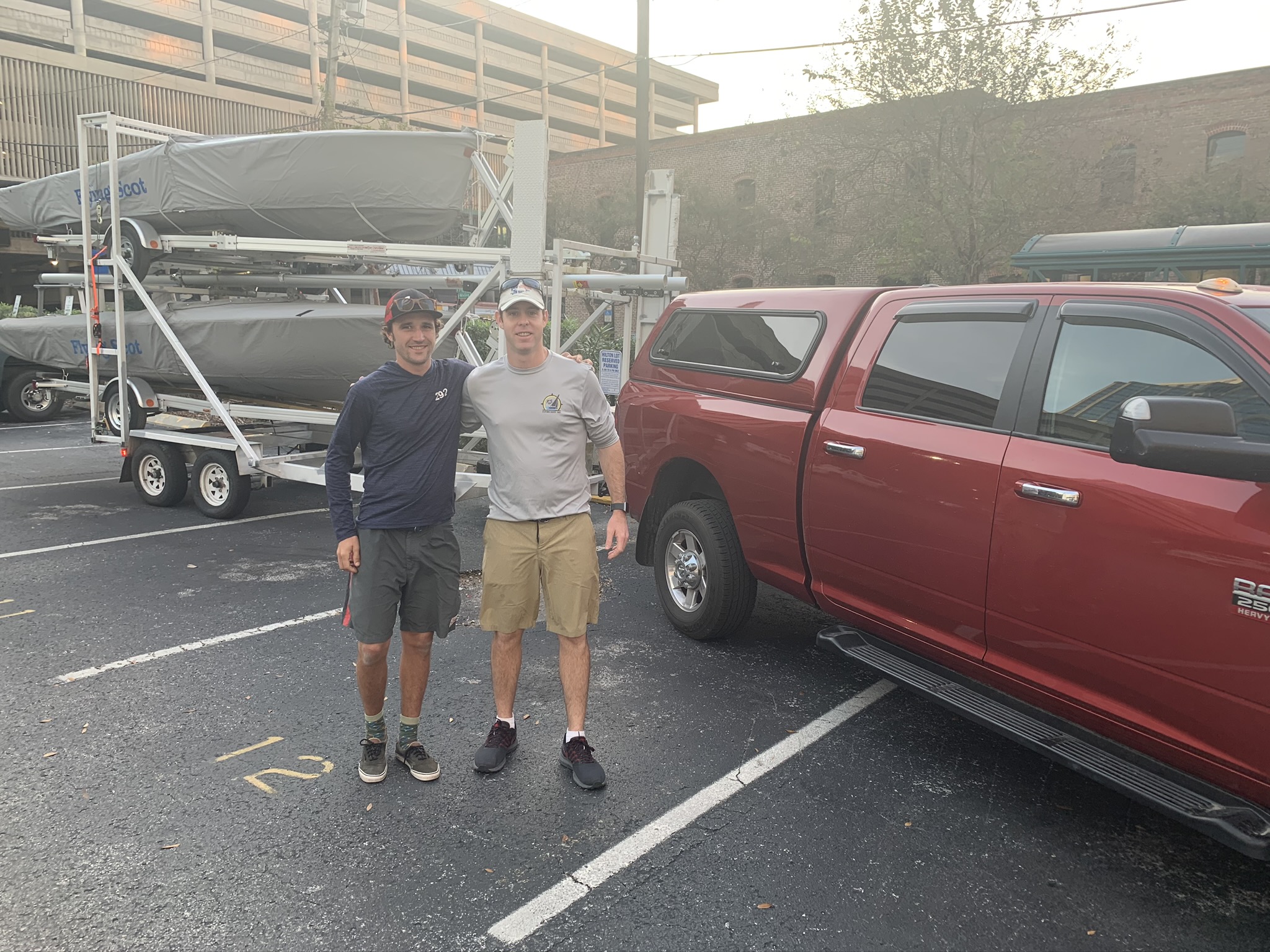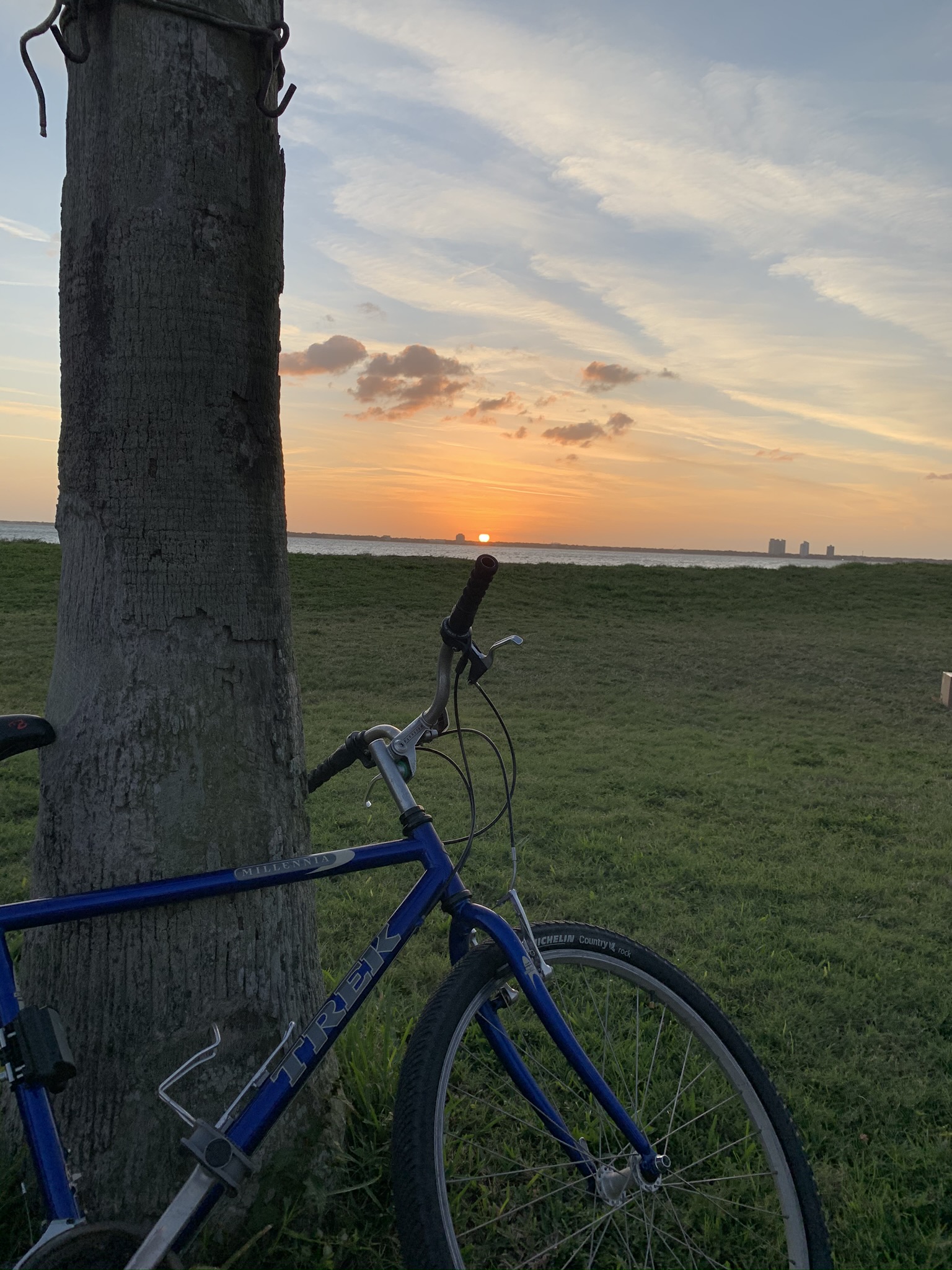The difference between top 5 (us in Tampa) and top 2
What an adventure! What a weekend! I wanted to go sailing in Tampa, and Carrie (my wife) couldn’t make it, so I took the opportunity to invite an old friend to join in on the fun. RJ and I had not seen each other in ten years, but it was like no time had passed at all. Whether we were racing or day sailing, Tampa is a fun place to take a boat and sail. I am structuring this post so that the pictures will tell a little bit about the travel adventure and the script will tell the story of the slight difference between winning a regatta and not.

I like this tale, because it’s the same as in any other sport. It wasn’t the Super Bowl or even Nationals, but the difference between good and great is not much in the athletic world. I’m blessed to get to compete and take this stuff into consideration and you can be too. Here are my top take-aways:
- Boat Prep: The compass would not work the first day, as it was not charged. Despite this we were in 5th 2 points out of first going into the final 2 races.
- We had room until we didn’t. The last day, current was taking boats up the starting line, which caused a hole that I thought would be a safe spot to quickly dissipate. Perhaps I could have made a case for not spinning, especially considering that the competitor did not say protest, but I felt like I fowled and did my turn. Regardless, I will be staying in the box from now on, which is the zone where I cannot be brought up above the starting boat.
- We were in the top 4, ahead of the boats that we needed to beat, and on port sailing downwind. The boats behind were bringing a puff from the left. We gybed to slow up for the puff and take it to the middle, but the wall of boats kept the slight puff from filling in across the course. We got passed by about 5 boats, and were unable to come back. So, from now on we will probably wait for the puff to get to us before we gybe in it.
That’s it in my book. I will say that the first day we did a good job figuring out that the current was helping boats come in from the left upwind and not the right. One race we did not know where to go because the slight puff we saw on the right was conflicting with the current advantage on the left. We gambled with the wind and it did not work so in hindsight we should have defaulted to the left since we were unsure. It was not our best race.
As the builder, we are always checking in with our boat speed compared to the top finishing boats on the water at any event. Our boat was right off the assembly line and the biggest victory to us was that the boat speed was fantastic. We lined up with the 1st, 2nd and 3rd place boats before and during the race. We were all very identical in speed and point, despite different sails. I look forward to applying my lessons learned at Mid-Winters. I will not be starting right at the boat among other things. We hope to see you come and compete with us there. With the boats being so identical, it comes down to mostly tactics in the Scot class, which makes it great fun no matter the level you are sailing at.
Thanks for reading. Please let us know what questions you have by email info@flyingscot.com or by calling 800-864-7208.
Finally, a bit on the shoreside activities we enjoyed. We brought the bikes to get back and forth from the hotel and the boat. In our cruising adventure we ran into some great live music on an out door patio restaurant.

Duh
When trimming the jib
It’s understood that u need to ease the sheet to power up
Which?
Windward or leeward sheet ?
Hi Marv,
That’s a great question. A slight tension on the windward sheet with a slightly eased leeward sheet are the ingredients for power. The jib can’t be out so much that the slot between the main and the jib is open. Once the extra power has accelerated the boat, then you can let off the windward sheet and crank her up, pulling the jib in, and take the lift that the speed will give you. Micro adjusting the main, and steering well can keep that speed on for quite awhile. You just can’t trim the jib so tight that it closes off the slot between the main and the jib. Ha! I’m not contradicting myself. I’m saying that it can’t be too open and it can’t be too tight. We’re looking for just right. Trimming a Flying Scot Jib is a true skill and those that learn the art should easily be considered sailing masters.